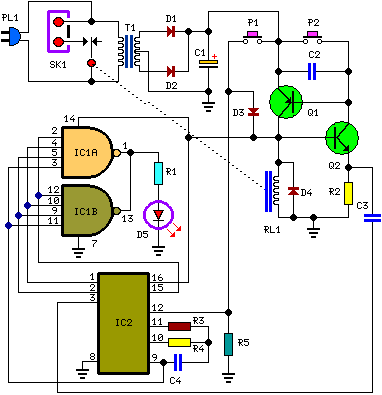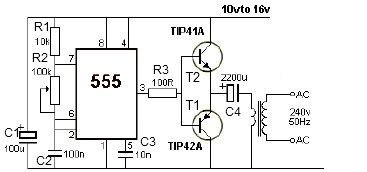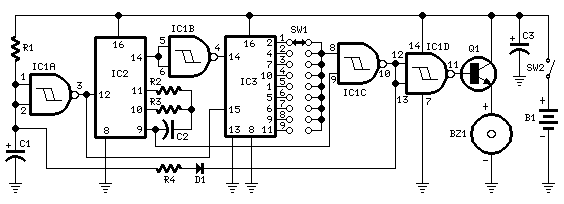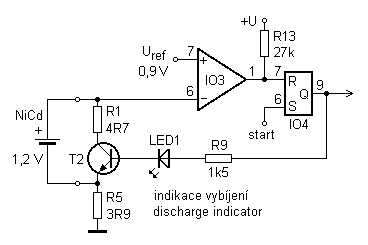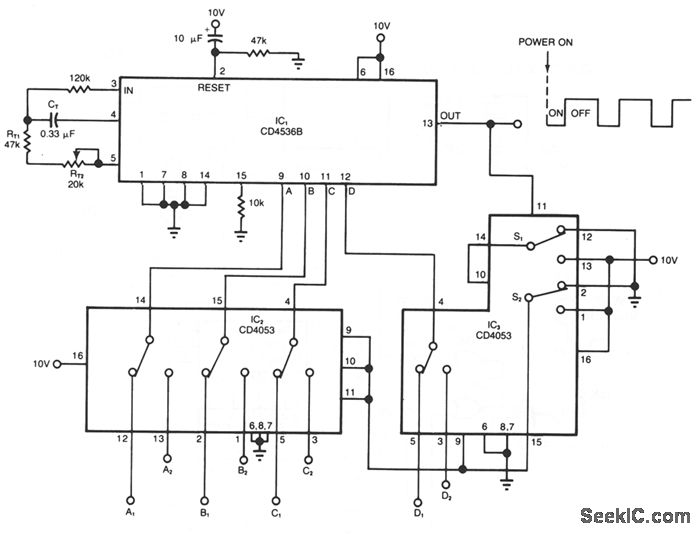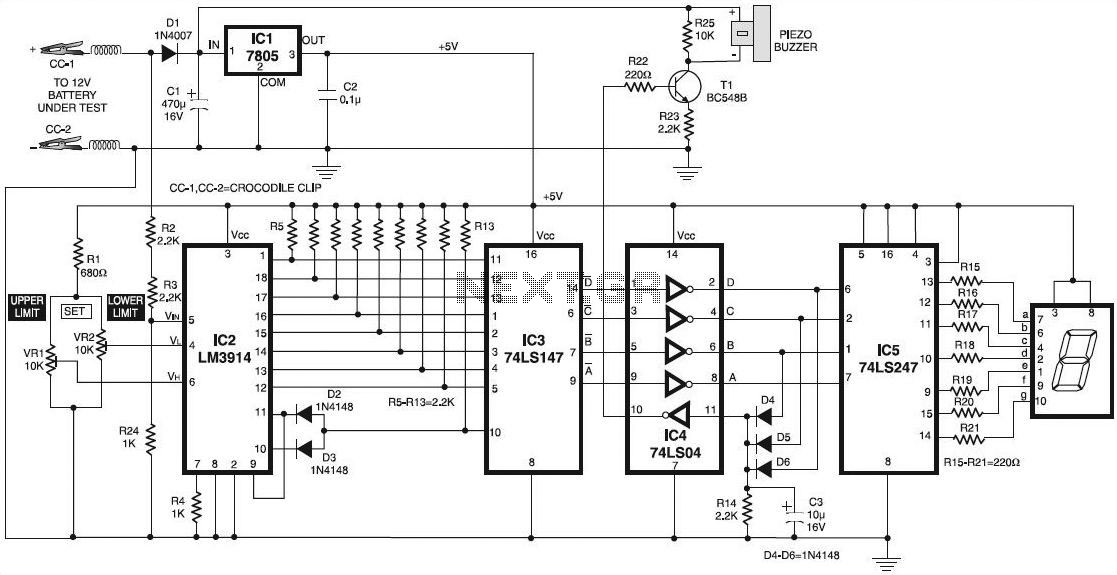
Timer for Charger
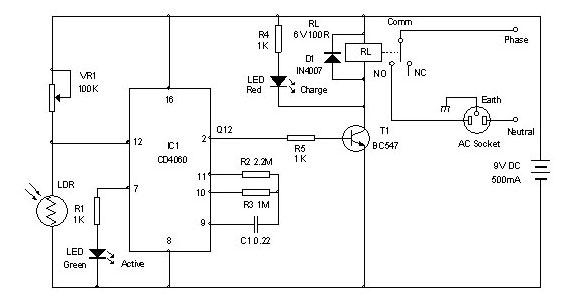
Timer for Charger Circuit Diagram. This timer circuit assists in maintaining the battery in optimal condition by enabling automatic charging for 5 to 6 hours daily, allowing the device to be left unattended.
The timer circuit for the charger is designed to automate the charging process of a battery, ensuring that it remains in peak condition without requiring constant supervision. This circuit typically incorporates a timer IC, such as the 555 timer, which can be configured in monostable or astable mode depending on the desired functionality.
In a typical configuration, the timer can be set to initiate the charging cycle for a predetermined duration, usually between 5 to 6 hours. This is achieved by adjusting the resistor and capacitor values connected to the timer IC, which determine the time delay. Upon activation, the timer switches on a relay or a transistor, which in turn connects the battery to the charger.
The circuit may also include additional components such as diodes for protection against reverse polarity, capacitors for filtering, and resistors to limit current. A voltage regulator can be integrated to ensure that the battery is charged at a safe voltage level, preventing overcharging which can damage the battery.
Furthermore, an LED indicator can be added to signal the status of the charging process, providing visual feedback to the user. This timer circuit is particularly useful in applications where batteries are charged in remote locations or where user intervention is not feasible, thus enhancing the reliability and longevity of the battery system.
Overall, the timer for the charger circuit diagram exemplifies a practical solution for automated battery management, contributing to the efficiency and convenience of battery-operated devices.Timer for Charger Circuit Diagram. This timer circuit helps to keep the battery in top condition through automatic charging for 5 to 6 hours daily so that the instrument can be left unattended 🔗 External reference
The timer circuit for the charger is designed to automate the charging process of a battery, ensuring that it remains in peak condition without requiring constant supervision. This circuit typically incorporates a timer IC, such as the 555 timer, which can be configured in monostable or astable mode depending on the desired functionality.
In a typical configuration, the timer can be set to initiate the charging cycle for a predetermined duration, usually between 5 to 6 hours. This is achieved by adjusting the resistor and capacitor values connected to the timer IC, which determine the time delay. Upon activation, the timer switches on a relay or a transistor, which in turn connects the battery to the charger.
The circuit may also include additional components such as diodes for protection against reverse polarity, capacitors for filtering, and resistors to limit current. A voltage regulator can be integrated to ensure that the battery is charged at a safe voltage level, preventing overcharging which can damage the battery.
Furthermore, an LED indicator can be added to signal the status of the charging process, providing visual feedback to the user. This timer circuit is particularly useful in applications where batteries are charged in remote locations or where user intervention is not feasible, thus enhancing the reliability and longevity of the battery system.
Overall, the timer for the charger circuit diagram exemplifies a practical solution for automated battery management, contributing to the efficiency and convenience of battery-operated devices.Timer for Charger Circuit Diagram. This timer circuit helps to keep the battery in top condition through automatic charging for 5 to 6 hours daily so that the instrument can be left unattended 🔗 External reference
Warning: include(partials/cookie-banner.php): Failed to open stream: Permission denied in /var/www/html/nextgr/view-circuit.php on line 713
Warning: include(): Failed opening 'partials/cookie-banner.php' for inclusion (include_path='.:/usr/share/php') in /var/www/html/nextgr/view-circuit.php on line 713
